Ravi Kiran Sarvadevabhatla
TexTAR : Textual Attribute Recognition in Multi-domain and Multi-lingual Document Images
Sep 16, 2025Abstract:Recognizing textual attributes such as bold, italic, underline and strikeout is essential for understanding text semantics, structure, and visual presentation. These attributes highlight key information, making them crucial for document analysis. Existing methods struggle with computational efficiency or adaptability in noisy, multilingual settings. To address this, we introduce TexTAR, a multi-task, context-aware Transformer for Textual Attribute Recognition (TAR). Our novel data selection pipeline enhances context awareness, and our architecture employs a 2D RoPE (Rotary Positional Embedding)-style mechanism to incorporate input context for more accurate attribute predictions. We also introduce MMTAD, a diverse, multilingual, multi-domain dataset annotated with text attributes across real-world documents such as legal records, notices, and textbooks. Extensive evaluations show TexTAR outperforms existing methods, demonstrating that contextual awareness contributes to state-of-the-art TAR performance.
RoadSocial: A Diverse VideoQA Dataset and Benchmark for Road Event Understanding from Social Video Narratives
Mar 27, 2025

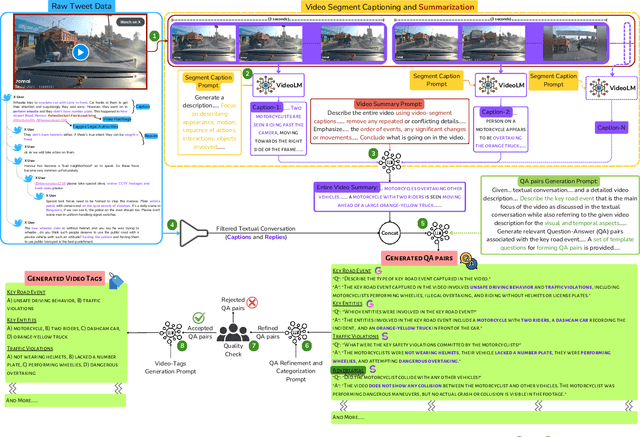
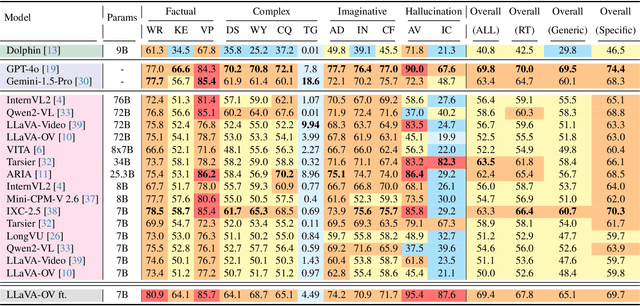
Abstract:We introduce RoadSocial, a large-scale, diverse VideoQA dataset tailored for generic road event understanding from social media narratives. Unlike existing datasets limited by regional bias, viewpoint bias and expert-driven annotations, RoadSocial captures the global complexity of road events with varied geographies, camera viewpoints (CCTV, handheld, drones) and rich social discourse. Our scalable semi-automatic annotation framework leverages Text LLMs and Video LLMs to generate comprehensive question-answer pairs across 12 challenging QA tasks, pushing the boundaries of road event understanding. RoadSocial is derived from social media videos spanning 14M frames and 414K social comments, resulting in a dataset with 13.2K videos, 674 tags and 260K high-quality QA pairs. We evaluate 18 Video LLMs (open-source and proprietary, driving-specific and general-purpose) on our road event understanding benchmark. We also demonstrate RoadSocial's utility in improving road event understanding capabilities of general-purpose Video LLMs.
CrackUDA: Incremental Unsupervised Domain Adaptation for Improved Crack Segmentation in Civil Structures
Dec 20, 2024Abstract:Crack segmentation plays a crucial role in ensuring the structural integrity and seismic safety of civil structures. However, existing crack segmentation algorithms encounter challenges in maintaining accuracy with domain shifts across datasets. To address this issue, we propose a novel deep network that employs incremental training with unsupervised domain adaptation (UDA) using adversarial learning, without a significant drop in accuracy in the source domain. Our approach leverages an encoder-decoder architecture, consisting of both domain-invariant and domain-specific parameters. The encoder learns shared crack features across all domains, ensuring robustness to domain variations. Simultaneously, the decoder's domain-specific parameters capture domain-specific features unique to each domain. By combining these components, our model achieves improved crack segmentation performance. Furthermore, we introduce BuildCrack, a new crack dataset comparable to sub-datasets of the well-established CrackSeg9K dataset in terms of image count and crack percentage. We evaluate our proposed approach against state-of-the-art UDA methods using different sub-datasets of CrackSeg9K and our custom dataset. Our experimental results demonstrate a significant improvement in crack segmentation accuracy and generalization across target domains compared to other UDA methods - specifically, an improvement of 0.65 and 2.7 mIoU on source and target domains respectively.
MoRAG -- Multi-Fusion Retrieval Augmented Generation for Human Motion
Sep 18, 2024
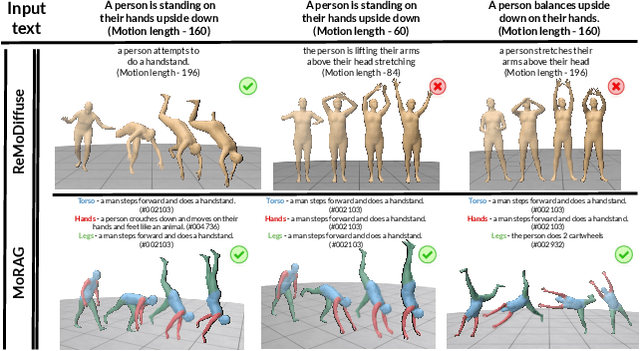


Abstract:We introduce MoRAG, a novel multi-part fusion based retrieval-augmented generation strategy for text-based human motion generation. The method enhances motion diffusion models by leveraging additional knowledge obtained through an improved motion retrieval process. By effectively prompting large language models (LLMs), we address spelling errors and rephrasing issues in motion retrieval. Our approach utilizes a multi-part retrieval strategy to improve the generalizability of motion retrieval across the language space. We create diverse samples through the spatial composition of the retrieved motions. Furthermore, by utilizing low-level, part-specific motion information, we can construct motion samples for unseen text descriptions. Our experiments demonstrate that our framework can serve as a plug-and-play module, improving the performance of motion diffusion models. Code, pretrained models and sample videos will be made available at: https://motion-rag.github.io/
Transfer-LMR: Heavy-Tail Driving Behavior Recognition in Diverse Traffic Scenarios
May 08, 2024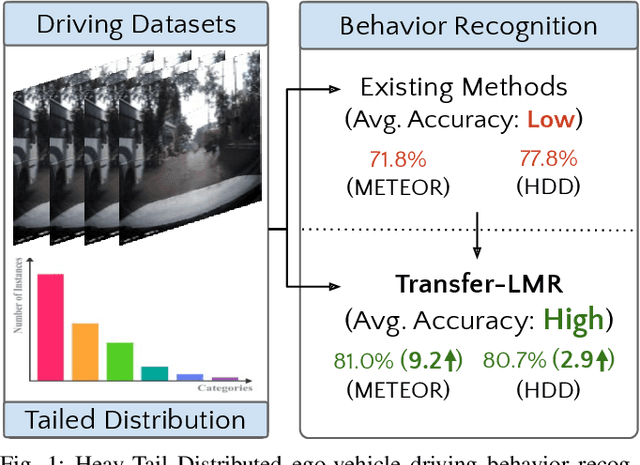
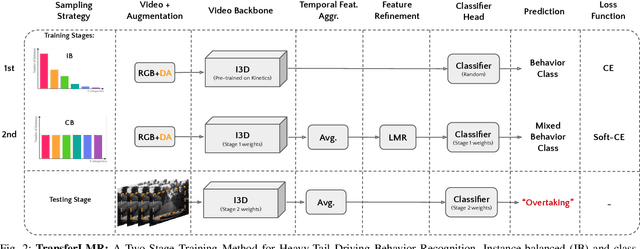
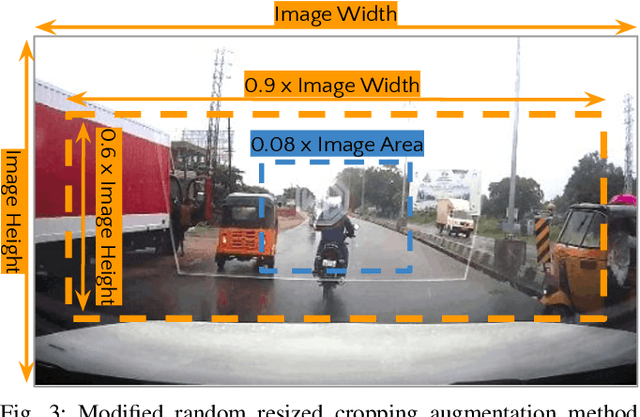
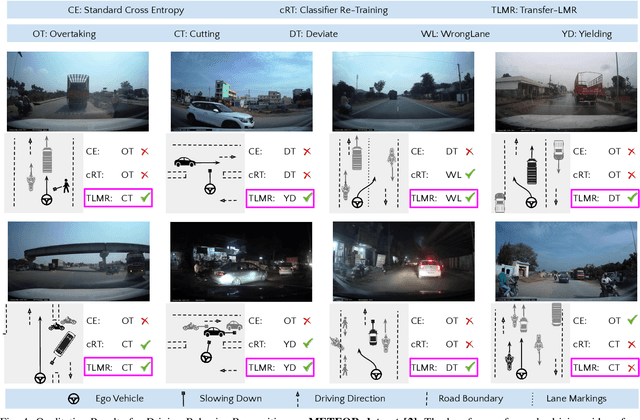
Abstract:Recognizing driving behaviors is important for downstream tasks such as reasoning, planning, and navigation. Existing video recognition approaches work well for common behaviors (e.g. "drive straight", "brake", "turn left/right"). However, the performance is sub-par for underrepresented/rare behaviors typically found in tail of the behavior class distribution. To address this shortcoming, we propose Transfer-LMR, a modular training routine for improving the recognition performance across all driving behavior classes. We extensively evaluate our approach on METEOR and HDD datasets that contain rich yet heavy-tailed distribution of driving behaviors and span diverse traffic scenarios. The experimental results demonstrate the efficacy of our approach, especially for recognizing underrepresented/rare driving behaviors.
IDD-X: A Multi-View Dataset for Ego-relative Important Object Localization and Explanation in Dense and Unstructured Traffic
Apr 12, 2024Abstract:Intelligent vehicle systems require a deep understanding of the interplay between road conditions, surrounding entities, and the ego vehicle's driving behavior for safe and efficient navigation. This is particularly critical in developing countries where traffic situations are often dense and unstructured with heterogeneous road occupants. Existing datasets, predominantly geared towards structured and sparse traffic scenarios, fall short of capturing the complexity of driving in such environments. To fill this gap, we present IDD-X, a large-scale dual-view driving video dataset. With 697K bounding boxes, 9K important object tracks, and 1-12 objects per video, IDD-X offers comprehensive ego-relative annotations for multiple important road objects covering 10 categories and 19 explanation label categories. The dataset also incorporates rearview information to provide a more complete representation of the driving environment. We also introduce custom-designed deep networks aimed at multiple important object localization and per-object explanation prediction. Overall, our dataset and introduced prediction models form the foundation for studying how road conditions and surrounding entities affect driving behavior in complex traffic situations.
A Fine-Grained Vehicle Detection Dataset for Unconstrained Roads
Dec 30, 2022

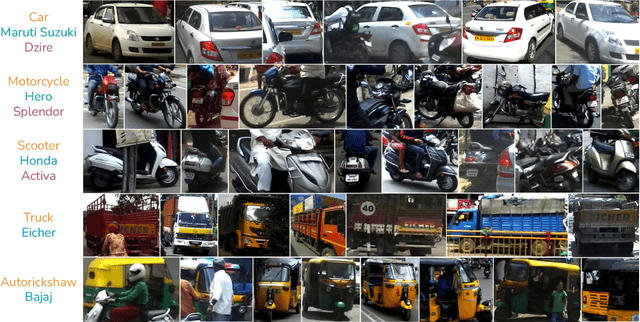
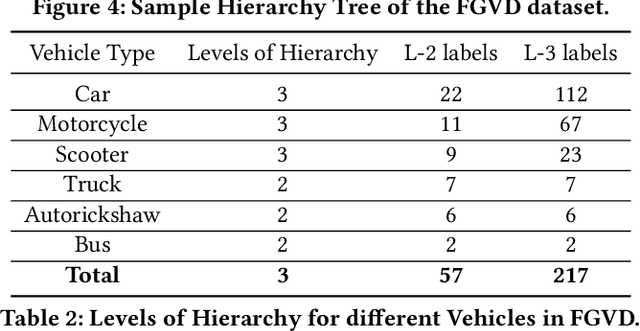
Abstract:The previous fine-grained datasets mainly focus on classification and are often captured in a controlled setup, with the camera focusing on the objects. We introduce the first Fine-Grained Vehicle Detection (FGVD) dataset in the wild, captured from a moving camera mounted on a car. It contains 5502 scene images with 210 unique fine-grained labels of multiple vehicle types organized in a three-level hierarchy. While previous classification datasets also include makes for different kinds of cars, the FGVD dataset introduces new class labels for categorizing two-wheelers, autorickshaws, and trucks. The FGVD dataset is challenging as it has vehicles in complex traffic scenarios with intra-class and inter-class variations in types, scale, pose, occlusion, and lighting conditions. The current object detectors like yolov5 and faster RCNN perform poorly on our dataset due to a lack of hierarchical modeling. Along with providing baseline results for existing object detectors on FGVD Dataset, we also present the results of a combination of an existing detector and the recent Hierarchical Residual Network (HRN) classifier for the FGVD task. Finally, we show that FGVD vehicle images are the most challenging to classify among the fine-grained datasets.
Action-GPT: Leveraging Large-scale Language Models for Improved and Generalized Zero Shot Action Generation
Nov 30, 2022



Abstract:We introduce Action-GPT, a plug and play framework for incorporating Large Language Models (LLMs) into text-based action generation models. Action phrases in current motion capture datasets contain minimal and to-the-point information. By carefully crafting prompts for LLMs, we generate richer and fine-grained descriptions of the action. We show that utilizing these detailed descriptions instead of the original action phrases leads to better alignment of text and motion spaces. Our experiments show qualitative and quantitative improvement in the quality of synthesized motions produced by recent text-to-motion models. Code, pretrained models and sample videos will be made available at https://actiongpt.github.io
DrawMon: A Distributed System for Detection of Atypical Sketch Content in Concurrent Pictionary Games
Nov 10, 2022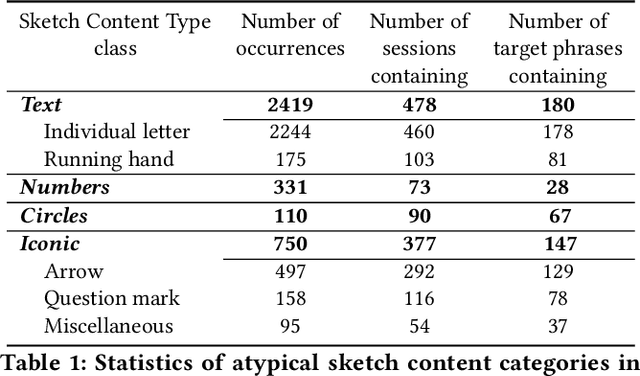

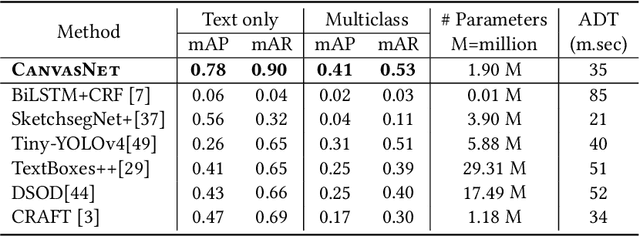
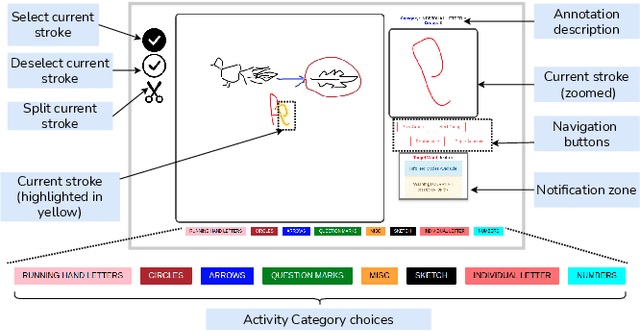
Abstract:Pictionary, the popular sketch-based guessing game, provides an opportunity to analyze shared goal cooperative game play in restricted communication settings. However, some players occasionally draw atypical sketch content. While such content is occasionally relevant in the game context, it sometimes represents a rule violation and impairs the game experience. To address such situations in a timely and scalable manner, we introduce DrawMon, a novel distributed framework for automatic detection of atypical sketch content in concurrently occurring Pictionary game sessions. We build specialized online interfaces to collect game session data and annotate atypical sketch content, resulting in AtyPict, the first ever atypical sketch content dataset. We use AtyPict to train CanvasNet, a deep neural atypical content detection network. We utilize CanvasNet as a core component of DrawMon. Our analysis of post deployment game session data indicates DrawMon's effectiveness for scalable monitoring and atypical sketch content detection. Beyond Pictionary, our contributions also serve as a design guide for customized atypical content response systems involving shared and interactive whiteboards. Code and datasets are available at https://drawm0n.github.io.
UAV-based Visual Remote Sensing for Automated Building Inspection
Sep 27, 2022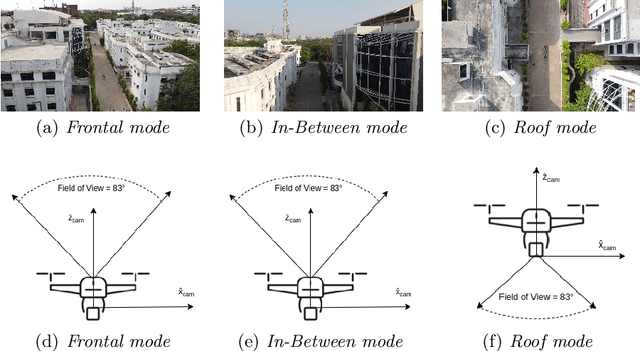
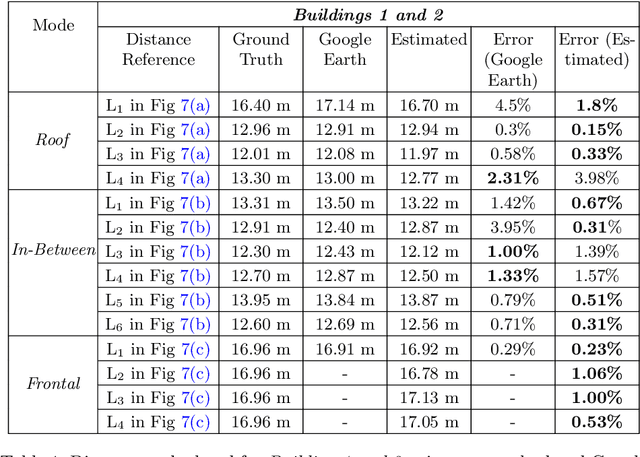
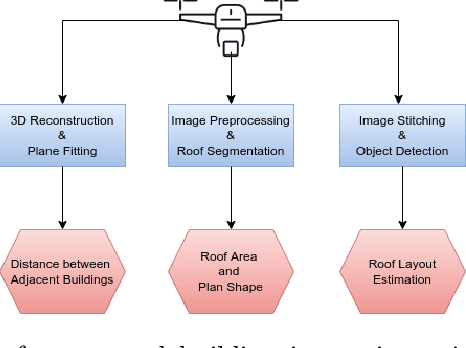
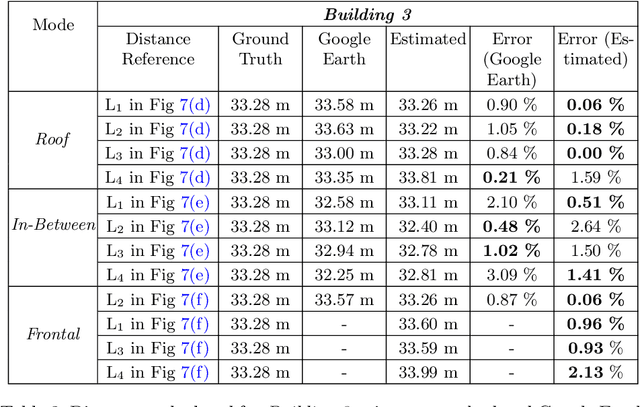
Abstract:Unmanned Aerial Vehicle (UAV) based remote sensing system incorporated with computer vision has demonstrated potential for assisting building construction and in disaster management like damage assessment during earthquakes. The vulnerability of a building to earthquake can be assessed through inspection that takes into account the expected damage progression of the associated component and the component's contribution to structural system performance. Most of these inspections are done manually, leading to high utilization of manpower, time, and cost. This paper proposes a methodology to automate these inspections through UAV-based image data collection and a software library for post-processing that helps in estimating the seismic structural parameters. The key parameters considered here are the distances between adjacent buildings, building plan-shape, building plan area, objects on the rooftop and rooftop layout. The accuracy of the proposed methodology in estimating the above-mentioned parameters is verified through field measurements taken using a distance measuring sensor and also from the data obtained through Google Earth. Additional details and code can be accessed from https://uvrsabi.github.io/ .
 Add to Chrome
Add to Chrome Add to Firefox
Add to Firefox Add to Edge
Add to Edge